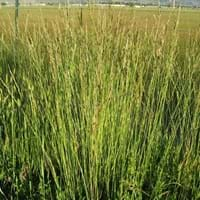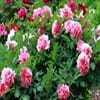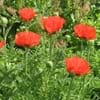Life Span
Perennial
Perennial
Type
Flowering Plants, Herbaceous Perennial
Grass
Origin
Asia
Hybrid origin
Types
Bowl of Beauty, Laura Dessert
Alta fescue, Kentucky fescue
Number of Varieties
Not Available
Habitat
Dappled Shade, Woodland Garden
meadows, Well Drained, yards
USDA Hardiness Zone
4-8
5-8
Sunset Zone
A3, 1a, 1b, 2a, 2b, 3a, 3b, 4, 5, 6, 7, 8, 9, 10, 11, 12, 13, 14, 15, 16, 17, 18, 19, 20, 22
A1, A2, A3, 1a, 1b, 2a, 2b, 3a, 3b, 4, 5, 6, 7, 8, 9, 10, 14, 15, 16, 17, 18, 19, 20, 21, 22, 23, 24
Habit
Clump-Forming
Clump-Forming
Minimum Width
Not Available
Flower Color
White, Light Pink
Pale White
Flower Color Modifier
Bicolor
Bicolor
Fruit Color
Not Available
Non Fruiting Plant
Leaf Color in Spring
Red, Dark Green, Bronze
Blue Green
Leaf Color in Summer
Green, Dark Green
Light Green
Leaf Color in Fall
Green, Dark Green, Bronze
Blue Green
Leaf Color in Winter
Not Available
Green, Tan
Leaf Shape
Lance shaped
Grass like
Plant Season
Spring, Summer
Spring, Fall
Sunlight
Full Sun, Partial Sun
Full Sun, Partial Sun
Type of Soil
Clay, Loam, Sand
Clay, Loam
The pH of Soil
Acidic, Neutral, Alkaline
Neutral, Alkaline
Soil Drainage
Well drained
Average
Bloom Time
Late Spring, Early Summer
Not Available
Tolerances
Not Available
Not Available
Where to Plant?
Ground
Ground
How to Plant?
Root Division, Seedlings
Seedlings, vegetative cuttings
Plant Maintenance
Medium
Medium
Watering Requirements
Allow soil to be completely dry in between waterings, Water Deeply
Allow to dry out slightly between watering, Never Over-water
In Summer
Lots of watering
Lots of watering
In Spring
Moderate
Moderate
In Winter
Average Water
Average Water
Soil pH
Acidic, Neutral, Alkaline
Neutral, Alkaline
Soil Type
Clay, Loam, Sand
Clay, Loam
Soil Drainage Capacity
Well drained
Average
Sun Exposure
Full Sun, Partial Sun
Full Sun, Partial Sun
Pruning
Remove damaged leaves, Remove dead branches, Remove dead leaves
Prune after flowering, Prune for size control, Remove dead or diseased plant parts
Fertilizers
5-10-10 fertilizer
All-Purpose Liquid Fertilizer
Pests and Diseases
Leaf Blotch, Ringspot virus, Stem rot, Tip blight, Verticillium Wilt
Brown patch, Gray leaf blight, Pythium blight, Rust, Zoysia patch
Plant Tolerance
Drought
Full Sun, Heat And Humidity
Flowers
Showy
Insignificant
Flower Petal Number
Double
Single
Foliage Texture
Coarse
Medium
Foliage Sheen
Glossy
Matte
Attracts
Ants, Butterflies, Not Available
Mealybugs, Mites
Allergy
no allergic reactions
Skin rash, Vomiting, Watery eyes
Aesthetic Uses
Cut Flowers, Showy Purposes
Ground Cover, Used in parkland
Beauty Benefits
Not Available
Not Available
Environmental Uses
Air purification
Fixes Nitrogen, Prevent Soil Erosion
Medicinal Uses
Alterative, Analgesic, Anodyne, anti inflammatory, Antibacterial, Antiseptic, Hypotensive, Tonic
Antispasmodic
Part of Plant Used
Root, Seeds, Stem
Whole plant
Other Uses
Eaten in a broth, Powdered and mixed with tea
Animal Feed, Used as Ornamental plant
Used As Indoor Plant
Yes
No
Used As Outdoor Plant
Yes
Yes
Garden Design
Cutflower, Feature Plant, Foundation, Mixed Border
Groundcover, Lawns and Turf
Botanical Name
PAEONIA lactiflora 'Shirley Temple'
Festuca arundinacea
Common Name
Double Pink Peony, Garden Peony
Tall Fescue
In Hindi
Double Pink Peony
tall fescue
In German
Doppelte rosa Pfingstrosen
Rohr-Schwingel
In French
Double Rose pivoine
Festuca arundinacea
In Spanish
Doble Pink Peony
Festuca arundinacea
In Greek
Διπλό Ροζ Παιωνία
tall fescue
In Portuguese
Duplo Pink Peony
Festuca arundinacea
In Polish
Podwójne Pink Peony
Kostrzewa trzcinowa
In Latin
Geminus Pink AGLAOPHOTIS
tall fescue
Phylum
Magnoliophyta
Magnoliophyta
Class
Magnoliopsida
Liliopsida
Order
Dilleniales
Cyperales
Family
Paeoniaceae
Poaceae
Clade
Angiosperms, Core eudicots, Eudicots
Angiosperms, Commelinids, Monocots
Tribe
Not Available
Not Available
Subfamily
Not Available
Not Available
Number of Species
Not Available
Not Available
Season and Care of Double Pink Peony and Tall Fescue
Season and care of Double Pink Peony and Tall Fescue is important to know. While considering everything about Double Pink Peony and Tall Fescue Care, growing season is an essential factor. Double Pink Peony season is Spring and Summer and Tall Fescue season is Spring and Summer. The type of soil for Double Pink Peony is Clay, Loam, Sand and for Tall Fescue is Clay, Loam while the PH of soil for Double Pink Peony is Acidic, Neutral, Alkaline and for Tall Fescue is Neutral, Alkaline.
Double Pink Peony and Tall Fescue Physical Information
Double Pink Peony and Tall Fescue physical information is very important for comparison. Double Pink Peony height is 90.00 cm and width 90.00 cm whereas Tall Fescue height is 5.10 cm and width Not Available. The color specification of Double Pink Peony and Tall Fescue are as follows:
Double Pink Peony flower color: White and Light Pink
Double Pink Peony leaf color: Red, Dark Green and Bronze
Tall Fescue flower color: Pale White
- Tall Fescue leaf color: Blue Green
Care of Double Pink Peony and Tall Fescue
Care of Double Pink Peony and Tall Fescue include pruning, fertilizers, watering etc. Double Pink Peony pruning is done Remove damaged leaves, Remove dead branches and Remove dead leaves and Tall Fescue pruning is done Prune after flowering, Prune for size control and Remove dead or diseased plant parts. In summer Double Pink Peony needs Lots of watering and in winter, it needs Average Water. Whereas, in summer Tall Fescue needs Lots of watering and in winter, it needs Average Water.





